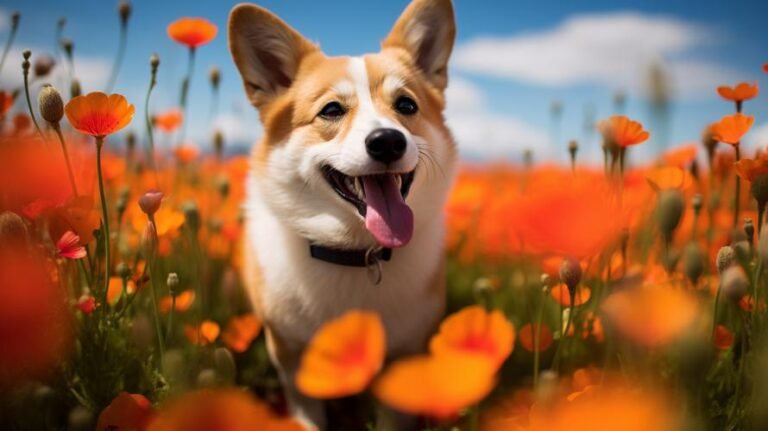With six toes on each foot and the ability to tilt its head backward until it touches the spine, the Norwegian Lundehund could easily star in its own canine superhero series. This remarkable breed, often referred to as the ‘Puffin Dog,’ has a set of unique skills that predestined it for puffin hunting along Norway’s harsh coastal cliffs. But what fuels such an extraordinary dog? To keep a Lundehund healthy and thrillingly active, it follows that the diet must be as special as the dog itself.
First off, it’s essential to recognize that the Norwegian Lundehund is not just any breed. Sporting a flexible skeletal structure unlike any other dog, they have an exceptionally intriguing history directly tied to their nutritional needs. Specifically bred for hunting puffins in narrow cliff paths, these dogs required agility, energy, and a digestive system robust enough to handle the unsteady availability of food. Understanding this background is crucial when considering the best food to give a modern Lundehund.
What’s on a Lundehund’s plate should ideally mimic what its ancestors ate. Historically, these dogs dined on fresh fish, seabirds, and whatever small mammals they could catch. Still, in today’s age, serving up a daily catch of puffin isn’t exactly practical or ethical. Instead, owners should offer a balanced diet that provides the protein, fats, and carbohydrates needed for an energy-filled lifestyle, reflecting their ancestral eating habits.
Proteins are the cornerstone of a Lundehund’s diet. They are critical for muscle maintenance and overall health. Fish-based foods can be an excellent choice, as they are reminiscent of the Lundehund’s traditional diet and are often rich in Omega-3 and Omega-6 fatty acids, which are vital for a healthy coat and skin. When picking commercial dog foods, look for high-quality, meat-based proteins as the first ingredient. Examples include salmon, herring, or other fish meats which reflect their natural inclination towards a fish-heavy diet.
Moreover, these fish proteins can benefit their joint health – an especially important factor considering that an active breed like the Lundehund puts a lot of stress on its joints. An interesting study published in the American Journal of Veterinary Research found that dogs fed a diet rich in omega-3 fatty acids showed significant improvement in their mobility and activity levels, particularly those with joint issues.
But protein isn’t the only nutrient of importance. Fat in the diet, especially from animal sources, provides concentrated energy, keeps their coat lustrous, and supports cellular function. A dog’s wild diet is naturally higher in fat, and for a hard-working breed like the Lundehund, this remains a dietary requirement. That said, the key is balance – too much fat can lead to obesity, especially in less active, modern-day Lundehunds.
Carbohydrates come next. While their hunting ancestors didn’t chow down on grains in the wild, high-quality carbohydrates from vegetables, fruits, and whole grains can provide essential vitamins, minerals, and fiber. These nutrients keep a Lundehund’s gut healthy and keep them regular. However, it’s important to know that some Lundehunds can be sensitive to certain grains. Each dog is unique, and some owners report success with grain-free diets. Others incorporate brown rice or sweet potatoes into meals with good results.
Aside from these macronutrients, don’t overlook the power and necessity of variety and fresh foods. Adding fresh fish, cooked eggs, or lean meats not only boosts nutritional content but also keeps meals exciting for your quirky companion. Remember, Norway’s rough terrain didn’t provide the consistent fare. A variety of nutrients from different sources can mimic the natural inconsistency in a way beneficial for a Lundehund’s metabolism.
But wait, there’s more! Lundehunds can have peculiar digestive systems, which sets them apart from other breeds. They are prone to a digestive disorder known as Lundehund Syndrome, which can lead to an intestinal imbalance and malabsorption of nutrients. Hence, special attention must be given to the food’s digestibility. Probiotics found in fermented foods like plain yogurt, or specifically designed supplements, may be helpful in maintaining a healthy gut flora balance, which can be especially critical for this unique breed.
Hydration also plays a critical role in the health of any dog, but especially in a Lundehund, who has adapted to survive in the wilderness with minimal resources. Fresh, clean water should be available at all times, and for those that get a good amount of exercise or live in hotter climates, monitoring their hydration status is imperative.
For those Lundehund owners keen on details, you can even go as far to tailor your Lundehund’s diet based on life stage and activity level. Puppies, for instance, have different nutritional needs than adults or seniors. Highly active dogs might need a slight increase in calories and protein for muscle repair and energy. Older dogs may benefit from lower-calorie diets to help prevent weight gain as their metabolism slows down.
In summary, the best diet for a Norwegian Lundehund is one that’s high in protein, mindfully balanced with fats and carbohydrates, and packed with a variety of nutrients from high-quality sources. Owners should take into account the breed’s special digestive needs, possibly introducing probiotics to support gut health. Regular check-ins with a vet can keep your Lundehund’s diet optimized and ensure that what’s served in their bowl supports the superhero antics that they’re naturally inclined to perform.
And don’t forget: Just like their human companions, each Lundehund is distinct. Observing how your dog responds to different foods and adjusting accordingly can lead to the right balance that keeps these extraordinary dogs bounding happily beside you, ready to take on any adventure—or puffin—that comes their way.



